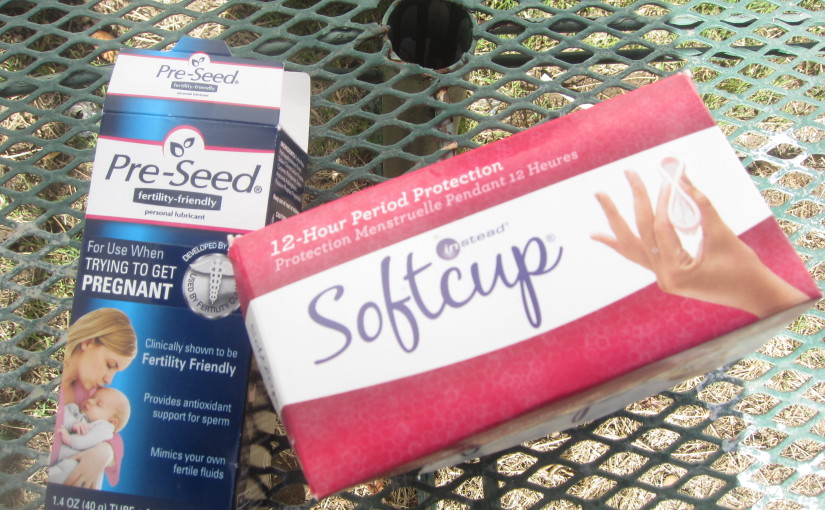There are conception items everyone should buy. I recommend these to increase your chances of getting pregnant.
Ovulation APP (For Conception)
APPS are great to track your ovulation date. You plugin your period, how many days it lasted, and your cycle days. Then it gives you an estimate of when you ovulate. Do not rely solely on ovulation tracker APPS to estimate when you ovulate to plan conception.
Ovulation Tests
Ovulation tests are great for tracking when you ovulate and typical for conception. They have a 99% accuracy rate in tracking a women’s LH hormone. This is the hormone that signals ovulation. The best time to try for a baby are on the peak days the test shows. This is usually 2 days of your cycle. I ask my recipients to start testing on cycle day 9. Although, the start date of testing may vary depending on your cycle. Also, you must track your ovulation every month by testing with ovulation tests three to seven days. This allows you to get an estimate of when you ovulate. More information about tracking ovulation HERE. I recommend my recipients use two types of ovulation tests. A digital and non-digital ovulation test. This is because sometimes ovulation tests give false readings. Typically if a false reading is given, it’s on the digital test. It’s best to check with another type of ovulation test to see if they match. Now to discuss the two ovulation tests to use for conception.
Digital ovulation test (For Conception)
Digital Ovulation Tests are great for conception because they give a solid reading of when you are about to ovulate. I recommend one that shows 2 peak days with a solid reading. There is one digital ovulation test which my recipients have had best results with. You can purchase it for cheap at…
Non-digital ovulation test (For Conception)

Non-digital Ovulation Tests are essential to tracking ovulation and conception. They’re typically more accurate than digital tests, so great to use alongside digital tests. Non-digital tests usually give two peak days, shown when the test line is as dark as the control line. These are the days someone would want to try for a baby. If you use both digital and non-digital tests and they give different readings, you should go by what the non-digital test says. For example, if the digital test shows a negative, yet the non-digital test shows a positive, then you should try for a baby that day you have the positive on the non-digital test. The non-digital test I recommend for conception and had best results with recipients is Easy@Home Ovulation Test
Pre-Seed (For Conception)
Pre-Seed is a natural lubricant formulated for conception. It does this by mimicking natural fluids produced by females when they are about to ovulate. Anyone who produces minimal cervical mucus must use this product. Also people that want to help sperm swim to the egg easier should use it. My pregnancy success with recipients increased when I started using it. You can use it internally by putting Pre-Seed in a syringe. Then inserting inside the cervix. Or you can use it externally by applying like lubricant. I recommend using internally since the Pre-Seed needs to adjust to the body temperature of the recipient. When I donate, I have the women inject one to two grams inside her. Then wait ten minutes before inserting myself. This lets the Pre-Seed adjust to her body temperature. You can inseminate right after injecting it, but the sperm will swim slower, so not recommended. This is because the sperm did not adjust to the women’s body temperature. For anyone wanting to use it in conception, you can find it here…

Soft Cups (For Conception)


Soft Cups are a product that were originally used for periods. But also work great for conception. This is because they keep sperm from falling out of the cervix. The procedure to use Soft Cups for conceiving naturally would be to have the male ejaculate inside of the female. After he ejaculates, lift up the female while the male is inside her. Remain in that position for five to ten minutes. Five to ten minutes after finishing conception, slowly pull out of the female. Make sure the semen does not fall out. Once the male is outside the female, the Soft Cup can be inserted inside the female. You can wait fifteen to thirty minutes if you wish. I recommend putting in the Soft Cup immediately if any sperm is falling out. When you insert the Soft Cup, push the bottom of the Soft Cup on the bottom of the opening of the vagina towards the cervix. This will ensure you catch any sperm that may flow out of the cervix. You then push the Soft Cup towards the cervix. The Soft Cup will form a barrier against the cervix, so sperm is unable to fall out. After the Soft Cup is in, I recommend having an orgasm with the Soft Cup still inside. The contraction of the orgasm will pull the sperm into the cervix. Remove the Soft Cup after 4 hours. These are the steps I take when I use Soft Cups during conception. You can find them below…
